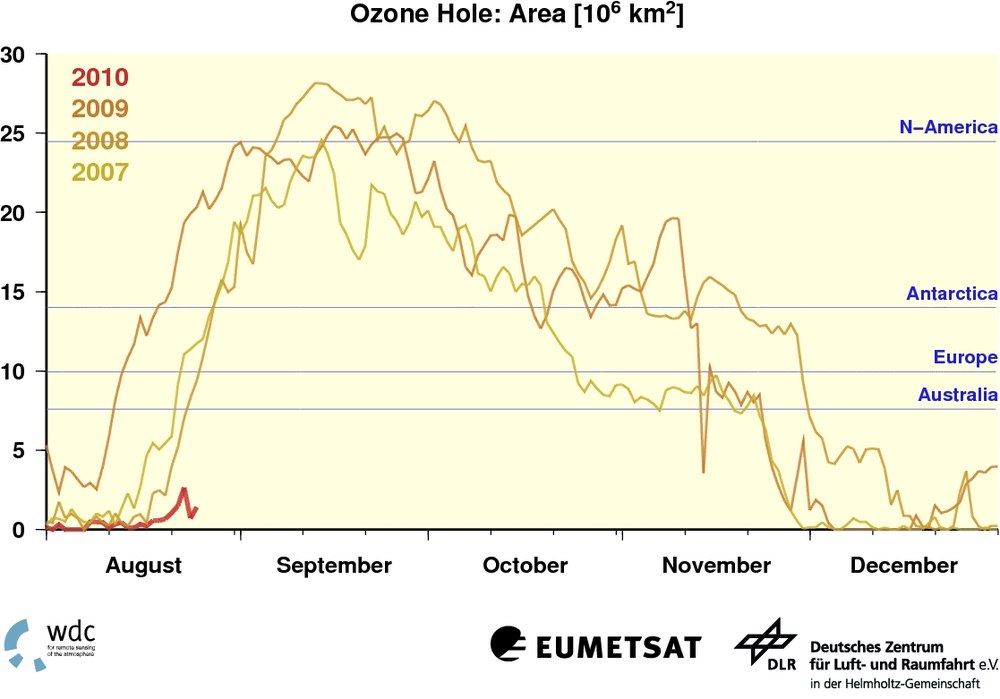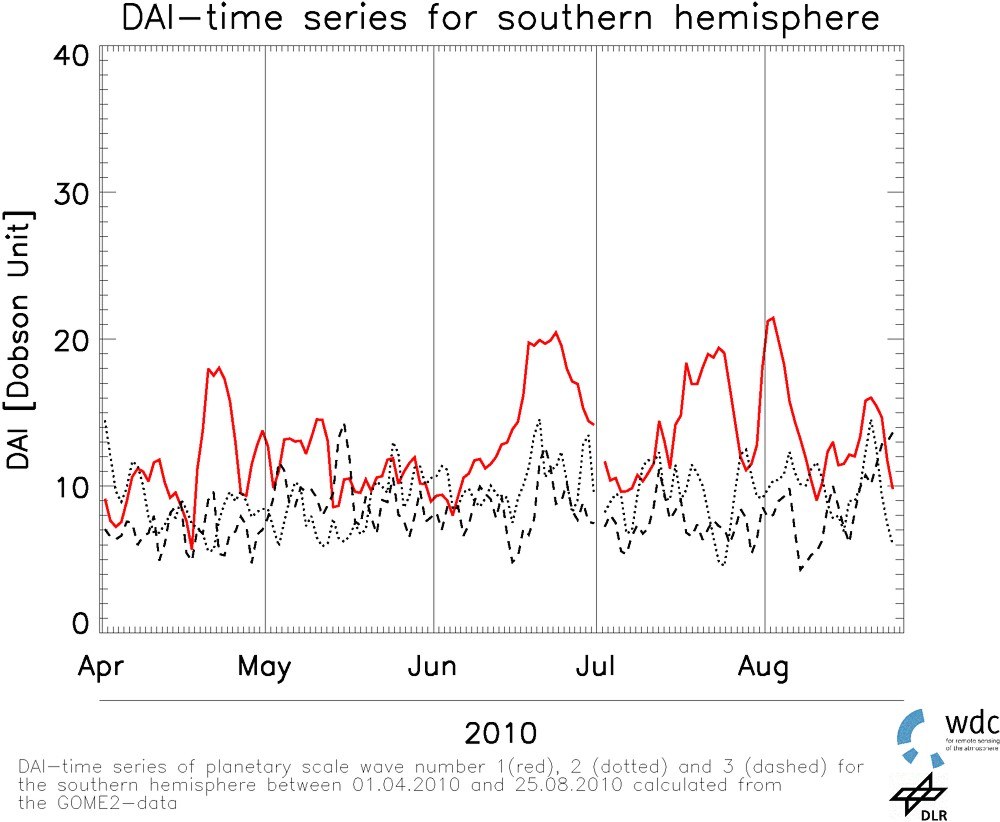The ozone-hole season 2010



The ozone-hole season 2010 started! GOME-2 on board of MetOp indicates strong dynamical activity in the southern hemisphere
Wintertime in the southern hemisphere is in full swing: The "precursor" of an ozone hole, a boiler shaped vortex over the South Pole has developed, preventing exchange of air masses between polar and middle latitudes. Daily analyses of GOME-2 data, evaluated at DLR on a routine basis on behalf of EUMETSAT and assimilated at DFD into a 4D-Var-Model, show that this polar vortex does not stay symmetrical to the pole but is being deformed continuously: Similar to the dough of a cake the air mass in this boiler above the South Pole is being kneaded all the time. For scientists this is of significant interest, as large-scale waves in the atmosphere, so-called planetary waves, are responsible for these deformations. There is some evidence that due to climate change the intensity of these waves will be changed, going along with changes of the global air flow pattern.
In the stratosphere above the respective winter pole (called “polar night”) a very cold vortex, the so-called polar vortex, develops due to missing insolation. Its huge wind speeds from 60 to 100 m/s, letting air parcels go around the pole within solely 5 to 7 days, act as a wall which hinders air-mass exchange from middle to polar latitudes. Inside the vortex the polar night leads to extremely cold temperatures of -80°C and below thus providing conditions for ozone depletion on a large scale: The polar boiler is quasi being preheated in preparation of the polar ozone hole. Eventually as the first sunlight appears in the ending polar winter the ozone-destroying chemistry is being launched. Up-to-date analyses of GOME-2 data, evaluated at DLR on a routine basis on behalf of EUMETSAT and assimilated at DFD into a 4D-Var-Model, lead to daily global charts revealing the latest extent of the polar ozone hole. Currently with a size of two to the million square meters the area covering the ozone hole is still relatively small. Within the next few weeks the area will increase many times over (see Figure 1).
Scientists observe with particular interest a phenomenon, which is associated with the ozone hole and only satellite data enable its study: The modification of its shape! Daily data of GOME-2 show, that the ozone hole totally modifies its shape on time scales of a few days. This is not being caused by chemical depletion; in fact, there is a change in flow systems spanning the world, so-called planetary waves. These large-scale phenomena are able to deform, shift or even split the polar vortex, including the region of air masses of low ozone: so to say, the polar vortex is located within a huge kneading machine. The fact, that it assumes the shape of a deformed triangle at the moment, hints to a relatively large activity of planetary waves 1 and 3 (see Fig. 2). In such manner scientists utilize the polar ozone hole for studying whether large-scale flow and circulation systems in the atmosphere change in a systematic way, for example in consequence of global warming.
At the same time in DFD the activity of the planetary waves is being visualized daily using the so-called dynamical activity index (DAI) for the stratosphere of the respective hemisphere (see Fig. 3). In the weeks following it can be expected that dynamical activity will increase. It is only with the breakdown of the polar vortex that a changeover from winter to summer conditions will happen. In the southern hemisphere this typically happens in October.
All information on the state of the ozone hole in the Antarctic, as well on the dynamical atmospheric activity, is being generated at DFD on a routine and day-to-day basis. It is freely available on the ICSU/WMO World Data Center for Remote Sensing of the Atmosphere, WDC-RSAT, a user service from DFD.
